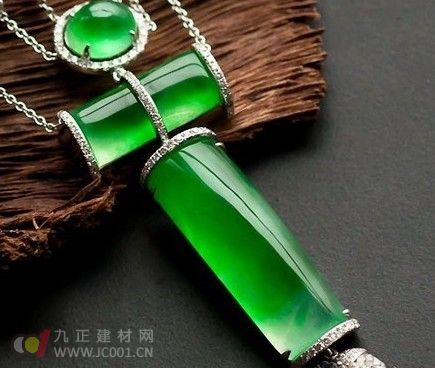Jade has long been celebrated as the gem of the East, renowned for its unique beauty that sets it apart from other precious stones like Baiyu. Its appeal extends beyond China, capturing the attention of many in Southeast Asia. In recent years, with growing interest in jade as an investment, high-quality pieces have become highly sought after, thanks to their distinctive style and cultural significance. Due to the near exhaustion of top-grade jade resources, prices began rising significantly as early as the 1990s, even before Hetian jade became a major player in the market. Over the past decade, only the finest jade has truly represented wealth and status.
So, does this mean jade is no longer a good choice for collectors and investors? Definitely not. Although the supply of high-quality jadeite from Myanmar has dwindled, making top-tier pieces expensive, the demand remains strong. This makes jade still a valuable asset for both collection and investment.

When identifying jade, the first step is to determine whether it's genuine or not. It’s also important to distinguish between A, B, and C grade jade. Only when you confirm it's A-grade can you truly assess its quality. A-grade jade retains its natural structure, color, and texture, with only minor polishing or carving done. B-grade jade, on the other hand, undergoes bleaching and filling, which may improve appearance but damages the stone’s integrity. C-grade jade is artificially colored using dyes or other treatments. While B and C grades exist, only A-grade jade holds real value for collectors.
Today, the jade market is flooded with various crafts. Many low-end pieces are priced just a few dollars or tens of yuan, mostly coming from Xinkengshan. These often have poor texture, color, and craftsmanship, and are commonly B or C-grade. Their low cost makes them accessible for casual collectors, but they rarely hold long-term value. Some people buy a piece for a few hundred dollars today, only to sell it for a few tens of dollars tomorrow—these small investments don’t add up over time. However, not all cheap jade is worthless. The key is to focus on quality rather than quantity. If you have the budget, it's better to invest in one authentic, high-quality piece rather than buying a pile of low-value items. Of course, the most important thing is to ensure what you're buying is genuine.
**Tips for Jade Collectors:**
1. **Know the ABCs:** A-grade jade has a natural glassy sheen. B and C-grade jade often look duller or oily due to chemical treatments. Also, naturally colored jade usually shows a cloud-like pattern. Be cautious if you see anything unusual.
2. **Equip Yourself:** If you want to inspect jade yourself, get a magnifying glass (10x is enough, 20x or 30x is better). Avoid anything above 30x, as it makes surface details hard to see. A good flashlight with bright white light is also essential for examining the stone thoroughly.
3. **Get an Appraisal:** Always get your jade checked by a professional. An official appraisal certificate adds an extra layer of security, ensuring you’re getting the real deal.
By following these tips, you can make more informed decisions and build a meaningful jade collection over time.